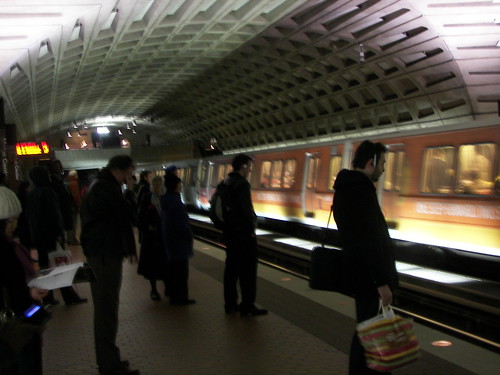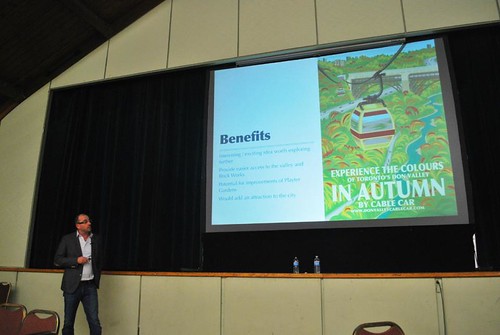Transit stuff #3: marketing the benefits of new transit proposals
 When I first moved here, in the late 1980s, Metrorail was a marvel, it was fast, it worked, it was pretty cheap too--the fares were 85 cents (now equal to $1.78 in 2016 dollars).
When I first moved here, in the late 1980s, Metrorail was a marvel, it was fast, it worked, it was pretty cheap too--the fares were 85 cents (now equal to $1.78 in 2016 dollars).Later I figured out depending on where I was going, the bus could be even more efficient, and cheaper, and in 1990 I became a transportational bicyclist, recognizing that the time I spent waiting for a bus or a train or walking to or from a train station or bus stop could instead be spent biking directly to my final destination.
In the DC area, I have been distressed by all the animus concerning streetcars in DC and Northern Virginia, light rail in Suburban Maryland outside of DC, and bus rapid transit around the metropolitan area, in part because these discussions exist as if -- at least until recently -- we didn't already have experience with high quality transit, or at least before Metrorail before its degradation.
About 11 years ago I wrote the piece, "Making Transit Sexy," discussing some of the marketing initiatives of Arlington County's transportation demand management programs.
A few months later, in "More on Metro and rethinking transit marketing," I wrote about the public communications failures of former WMATA General Manager Richard White--these failures culminated in his losing the job--making the point that even government agencies, but especially transit agencies, have to manage their relationships with the public beyond marketing, also in terms of public and strategic communications, which expanded just a bit from the 2005 entry.
Anyway and regardless, transit agencies don't seem to do a great job advocating for their transit projects, sometimes advocacy groups or other interested parties step in to do so.
One example is a proposal for an aerial tram in Toronto, the Don Valley Cable Car, which proposes a "novel" way to better connect the Don Valley to the rest of Toronto, in the face of serious topography issues, comparable to why an aerial tram was used to connect Oregon Health Sciences University to Western Portland and why cable cars have been implemented in Medellín, Colombia as part of a program to increase connectedness and access ("Story of cities #42: Medellín escapes grip of drug lord to embrace radical urbanism," Guardian).
Granted the program in Toronto is being pushed by a private sector firm that constructs these systems ("This man wants to build a cable car in the Don Valley: Can he sell it?," Toronto Globe & Mail) but in any case I was impressed with the stylized posters they created--modelled after great transit advertising posters from the 1800s and 1900s--to promote visually the benefits and attractions of the proposal.

The "streetcar" proposed by Mayor DeBlasio in Brooklyn and Queens (the proposal actually precedes his term in office, "Brooklyn to Queens, but Not by Subway," New York Times) is being promoted by a new advocacy group, the Friends of the Brooklyn Queens Connector (BQX).
Given that it can be expected that anti-transit opponents will rise out of the woodwork in various guises to oppose transit projects for a variety of reasons, it is essential for transit proponents to organize, focus on benefits and high quality message and marketing materials in advance of their projects, and to constantly be marketing and advocating in the face of likely opposition. As football coaches say, "the best defense is a good offense."

Image from Urban Toronto.
Note that one of the arguments that will always be made by the opposition is that the transit project is good only for developers, that it's just a way for them to make money.
That's why it is key to focus on the benefits received by residents in marketing materials. In both instances here, what's being stressed is the value of connections to under-connected places and the cost that imposes in terms of time and inconvenience.

Rendering of the BQX streetcar in Brooklyn's Sunset Park area.
Labels: protest and advocacy, strategic communications and marketing, transit marketing, transportation planning



1 Comments:
http://pilotonline.com/news/local/transportation/light-rail-will-be-on-november-ballot-in-virginia-beach/article_cca99f46-4e33-5a19-8c45-cd190d75d04c.html
Post a Comment
<< Home